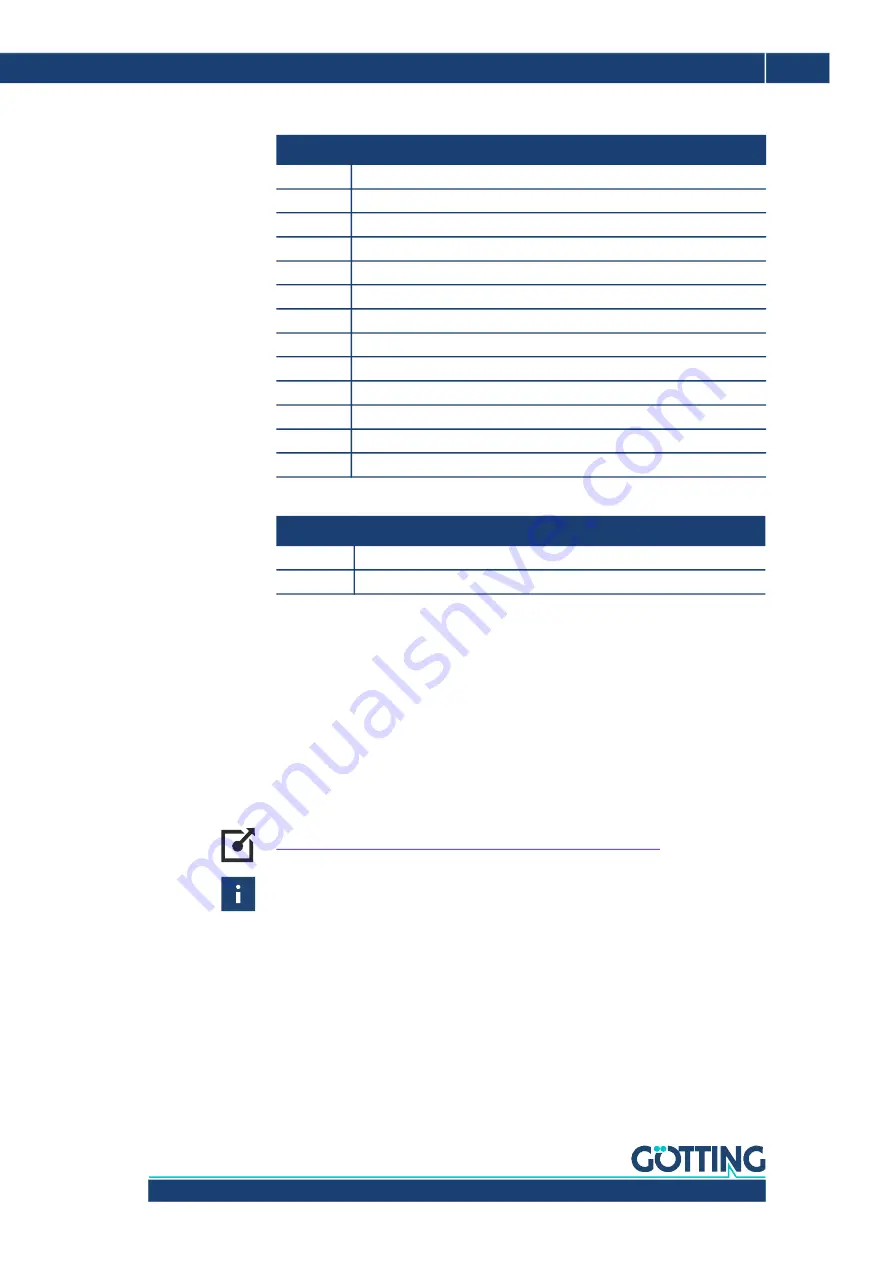
Device Description HG G-71915ZA | English, Revision 01 | Date: 09.09.2021
39
Interfaces – Chapter 10
10.3 CAN-Bus
10.3.1 CAN Grundlagen
The CAN or CANopen® configuration is structured according to ISO 11898 or EN
50325-4. As an aid, important terms and abbreviations are explained in this chapter.
For more detailed information, you can refer to the standards.
The technical specifications of the CANopen® standard can be downloaded from
the following link after a free registration:
http://www.can-cia.org/en/standardization/technical-documents/
Note that a CAN identifier or, in the case of CANopen®, the combination of CAN
identifier and node identifier must always be unique!
10.3.2 CAN 2.0A und CAN 2.0B
CAN 2.0A (Basic, 11 bit identifier) or CAN 2.0B (Extended, 29 bit identifier) can be
configured. The CAN parameters can be set via the service interface (see section
9.2.3.1 on page 34). Standard or Extended frames are sent and received (adjustable).
The bit timing as well as the identifier can be set via the service interface.
3 different CAN Message Objects can be sent and 1 can be received. It is configu
-
rable whether telegrams are issued permanently with the adjustable update rate or
only when a transponder is in the field.
3
4
5
Parameter error
6
7
8
Current transponder is readable and writable
9
Transponder is in the reading area
10
Transponder code can be read
11
Differential signal is negative (LEDs are green)
12
PosiPulse (LEDs are white)
13
14
15
Table 10
Status 2
Bit
Daten
1
At the sum signal a valid transponder code can be decoded
2
At the difference signal a valid transponder code can be decoded
Table 9
Status 1: Possible systems states / error messages (part 2 of 2)
Bit
Meaning






























